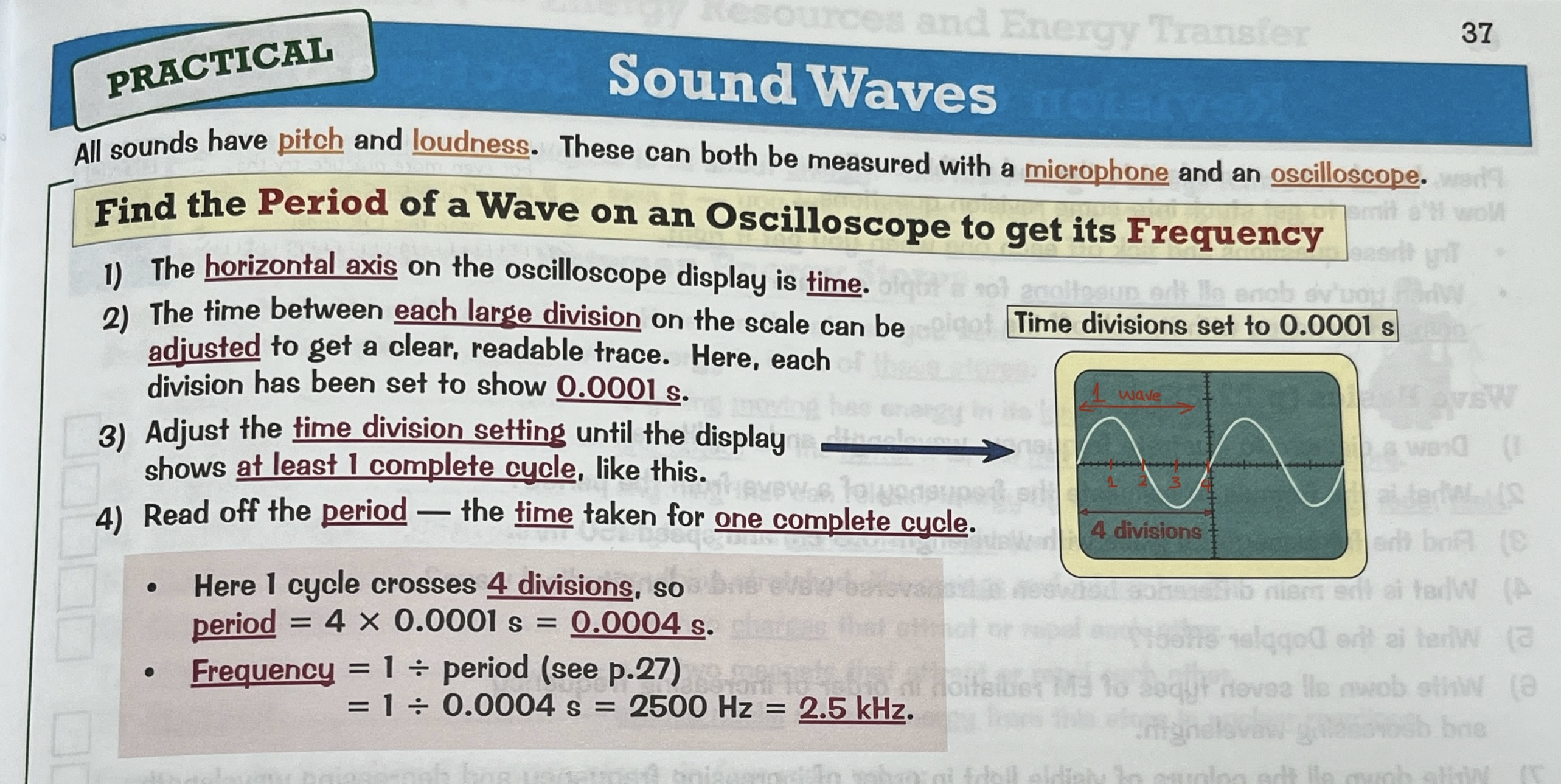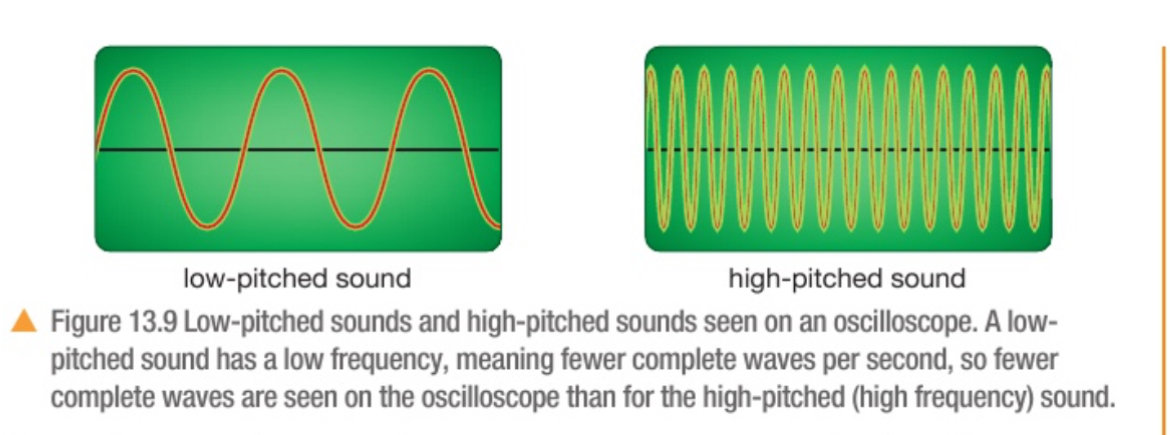Sound Waves
1/10
There's no tags or description
Looks like no tags are added yet.
Name | Mastery | Learn | Test | Matching | Spaced |
|---|
No study sessions yet.
11 Terms
What is the frequency range for human hearing?
20 - 20,000 Hz
What type of wave are sound waves? What causes sounds?
Therefore, describe how sound waves travel through air (3)
Longitudinal.
Cause by vibrating objects. These vibrations travel through the surrounding medium as a series of compressions
Vibrations (1) travel parallel to direction of propagation (2) as they are longitudinal (3). Waves made of compressions and rarefactions
Practical: investigate the speed of sound in air using echoes. What are echoes?
Reflection of sound
Method
Measure distance from one side to wall using a trundle wheel or long tape measure (should be min 50m)
One person strikes two blocks together
The other starts stop watch the moment they see blocks touch
(The sound travels to wall and reflects back as echo)
The time between the echo and the clap should be the same
(Time between each clap is the time for the sound to travel to wall and back (twice?))
Measure the time for 10 claps. On clap 10, stop the time.
Repeat experiment 10 times to find avrg time taken of 10 clap echoes
Find speed (s= d/t)
Accuracy problems (errors)?
How can we see if it was reliable?
Reaction time: human reaction time slower so stopping stop watch too late.
Echo could’ve been from surroundings and not from claps
Compare with others, see if there was little variation.
Speed should be around 340m/s
How can we improve experiment (more accurate)? How does changing this make it more accurate?
Larger distance between wall and person
Value is affected by human reaction time so the larger the distance, a fast reaction time matters less since you have more time to react and therefore results are more accurate.
Use a hinged ‘clapped board’ (?) it works best. But it need exterior handles to roe vent fingers being trapped
Waves can be reflected: ships can use this to find depth of sea below ship. This is called sonar
Waves can also be refracted: may depend on temp for example
How can an oscilloscope display sound waves? What can we learn about the sound wave when it is displayed here?
A microphone is plugged into oscilloscope. The microphone converts the sound waves to electrical signals which the oscilloscope is able to display as a transverse wave.
Because it is displayed as a transverse wave, it allows us to see features like the wave’s amplitude and frequency more easily.
What is the horizontal axis (x-axis) on oscilloscope? y-axis?
x-axis displays the time. You can adjust the time between each division (las mini líneas indicando de cuánto a cuanto sube) e,g un division can be displaying 0.001 sec. Entonces 4 mini líneas estarían displaying 0.001 × 4 seconds.
y-axis displays the voltage (as waves are converted to electrical signals). We can compare amplitude of waves.
How can we find frequency on an oscilloscope?

Pitch and frequency:
Relationship between them? In an oscilloscope how is frequency displayed?
object (like a string) vibrates quickly, it produces sound waves with a high frequency, which are sounds that are heard with high pitch
We know that f is number of complete vibrations/waves each second. In an oscilloscope we can see how many waves pass each second.
the more waves displayed = higher the f
This means that the shorter the wavelength = higher f
HOWEVER, we should not get confused with the amplitude of wave. Amplitude DOESN’T change, only wavelength

How does the loudness of a sound relate to the amplitude of source? Why? How is this displayed in an oscilloscope?
Greater the amplitude = louder the sound
Greater amplitude waves carry more energy
Height of wave = amplitude.